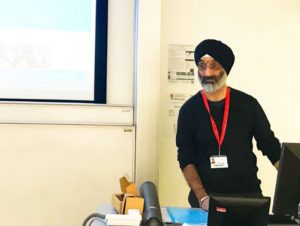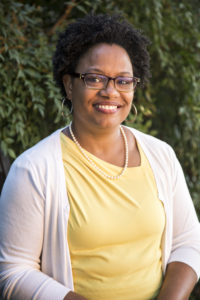360-degree immersive video apps: Why you should create meaningful research-based digital resources to engage learners

Editor’s Note: Dr. Tarsem Singh Cooner is a Senior Lecturer in the Department of Social Work and Social Care at the University of Birmingham. In this post, he describes why and how he developed 360-degree immersive video apps to create engaging learning opportunities for students. Additionally, his work shows how digital tools can be used to creatively disseminate research findings to practitioners. Dr. Cooner tweets at @Akali65. You can also email him at t.s.cooner@bham.ac.uk.
The background
Quite recently I was lucky enough to be part of a fantastic research project exploring factors that can either enable or create barriers to effective child protection social work. Our project had collected a lot of data that we were convinced could have a really positive impact on child protection services. To disseminate our research in a more accessible, meaningful, situated and impactful way, I led an initiative within the team to create a set of 360-degree immersive video apps that social work students and practitioners can download onto their smartphones via the iTunes and Google Play Stores. Using their phones with easily accessible 360-degree headsets (like Google’s Cardboard) they can become ‘immersed’ in our work through recreated scenes from our research experiences.
Preparing social work students for the licensure exam: An online intervention

Editor’s Note: Stephen Cummings is a Clinical Assistant Professor in the School of Social Work at the University of Iowa, where he works primarily distance education. In this blog post, Stephen shares how he converted an onground licensure prep review course into an online course with live sessions to increase accessibility of the content for students. You’ll also find a link to his published work about the course in the post. You can find Stephen on Twitter at @spcummings.
Over the past several years, I have been providing an online study session to help MSW students prepare for the Masters-level licensing exam. The online intervention came out of a practical necessity.
A brief history: In the spring of 2013, several students approached my school’s faculty with a concern. Iowa, our jurisdiction, allows students to sit for the graduate level licensure exam during their final semester. As long as a student is in good standing (meaning they are not on academic probation and are taking the requisite course work for graduation), that student can be granted permission to sit for the exam prior to graduation day. This arrangement is intended to help close the gap between graduation and full employment, specifically in an environment where licensure is required. The students asked if the school could provide assistance is exam preparation.
Your Devices are Welcome!: How to Handle Technology in the Social Work Classroom

Editor’s Note: Dr. Stephanie Hamm is an associate professor of social work in the School of Social Work at Abilene Christian University in Texas. In this blog post, she shares how mobile devices and other forms of technology are incorporated into her social work class sessions. You can follow her on Twitter at @drHammsj.
Many years ago, when I was a social work student, I learned effective ways of working with people, what to do, and how to take care of myself. Back then, we did not rely on the Internet, rather, we relied on books and articles, and the expertise of our teachers, field instructors, and practitioners in the field. We often relied on the policies of the organization. Today, in my classroom, students can check names and dates, statistics and new interventions in no time at all, using their phone. I once had a student fact-check everything I said in class! Students know when an instructor is bluffing and faking, so why not tap into their curiosity and easy access for the purpose of creating a classroom in which students are not just consumers of course content, but co-creators. I tell my students that they are responsible for their knowledge as well as their classmates’ knowledge.
I use and encourage technology and devices in my classes to find information that is quickly changing. For example, my content for a class session can discuss social theory on the changing American demographics, and students can quickly find actual numbers that define and operationalize that changing demographic.
Sharing power with students by seeking their input on a grading rubric


Editor’s Note: Matthea Marquart is the Director of Administration for the Online Campus at the Columbia School of Social Work and Elise Verdooner is an Associate with the Columbia School of Social Work. In this blog post, Matthea & Elise share how they sought input from social work students in one of their courses to revise and update an assignment rubric. This practice offers social work educators at all levels the opportunity to bring equity to the classroom.
Introduction: Why did we decide to try sharing power with students around the rubric for our final assignment?
This spring, we worked together to teach a course on Staff Development, Training, and Coaching at Columbia University’s School of Social Work (CSSW). This is an elective course for second-year students in their final semester of our MSW program. Matthea was the instructor and Elise was the Associate (similar to a TA, an Associate at CSSW provides academic support to graduate social work students).
As we were planning the course, Matthea attended a workshop on “Grading, Rubrics, and Feedback for Equity and Inclusion,” which was hosted by Monique M. Jethwani, Director of Faculty Development at CSSW, and led by Amanda M. Jungels and Chandani Patel of Columbia’s Center for Teaching and Learning (CTL). Matthea’s key takeaway from the workshop was to try an activity to increase inclusiveness around grading by giving students the power to amend the rubric for the final assignment, and Elise was willing to give it a try as well. The activity appealed to us because as social workers we believe in creating an inclusive classroom.


